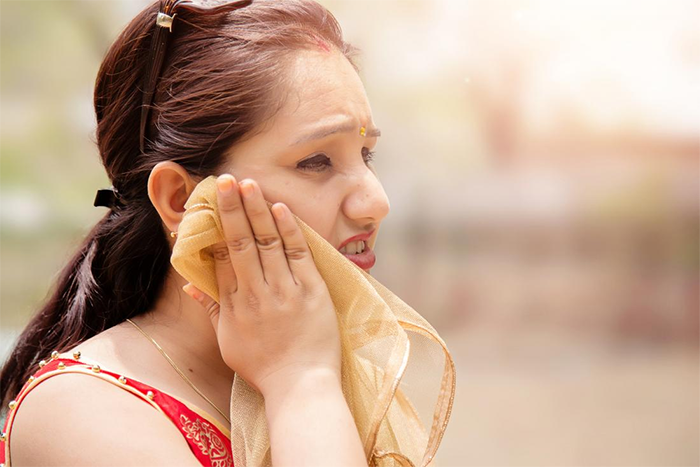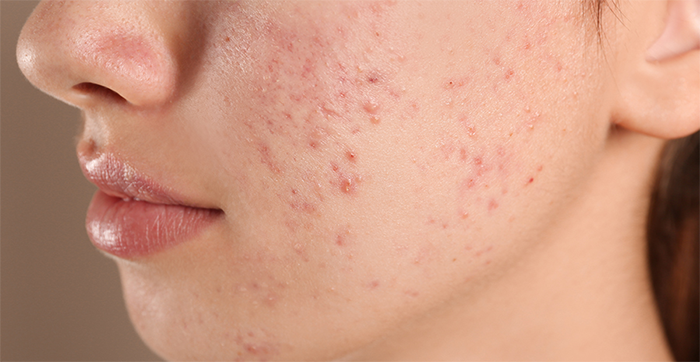They say you are what you eat, and that spicy food is bad for the skin. But is there truth to this claim? Well, we have the answers.
We Asians love our spicy food, there’s no doubt about that. Most of us enjoy that little sprinkle of spice to set our tastebuds ablaze and bring warmth to our cheeks. That’s why we take this so seriously.
Spicy food doesn’t technically cause acne

Eating spicy food doesn’t directly cause acne and breakouts. It’s the side effects experienced that increase the chances of a breakout occurring, even more so if you’re not used to eating spicy foods in the first place.
Our body temperature rises when eating a spicy meal and thereby produces sweat which in turn triggers the oils in the skin to be released. When dirt and bacteria get trapped by those oils, acne occurs.
That’s why if you’re not used to the heat of spicy food, you might sweat more, and in turn, breakout more.
…But it can exacerbate existing breakouts

Those who are sensitive to spice may want to stay away from it. According to a study, 58% of women who ate spicy food experienced having blackheads.
Spicy foods can be serious skin irritants and cause flare-ups in existing skin conditions. Other than that, it can increase the amount of redness and facial flushing in those who are prone to these symptoms.
Gut inflammation is also a possibility, triggered by acid reflux, upset stomach, or other symptoms. This inflammation may also cause skin flushing, acne breakout, or even eczema.
How to tell you’re sensitive to spicy food

To test whether you’re sensitive to spicy food, you would likely know from experiencing these constantly when eating a spicy meal:
Acne
Inflammation and sweat trigger the overproduction of sebum, which in turn can lead to acne. Other symptoms of acne such as blackheads, whiteheads, and pimples can also occur.
There was in-depth research of Chinese women which found out a clear and significant link between oily skin and ingestion of sweet or spicy food, so be extra cautious if you fall into this demographics!
Broken capillaries/spider veins
Broken capillaries or spider veins are what occurs when blood vessels beneath your skin dilate and enlarge, which can be caused by inflammation.
Spider veins commonly occur on the face and legs and can be a nuisance to deal with as our skin isn’t as clear as we like. If you eat spicy food and see broken capillaries spreading on your face, you know you’re sensitive.
Flushing
Redness of the skin happens when blood vessels below the skin dilate and fill with more blood. This can happen due to an increase in body heat.
If you look like you’ve just fallen in love every time you eat spicy food, it might be time to lay off the spice.
Rosacea
Rosacea is a common skin condition that causes visible blood vessels, redness, and small, red, pus-filled bumps on the affected area.
These types of breakouts can occur for weeks, so if you have a stubborn breakout that won’t go away, it might be due to spicy food.
Methods on preventing a ‘spicy food breakout’

There are a few methods you can try to prevent a breakout caused by spicy food without cutting it out of your diet entirely.
Build your tolerance
If you eat more spicy foods, you can build up your tolerance over time. Start by acclimating yourself to milder spices and peppers and slowly work your way up.
Once you’ve gotten used to mild chillies, you can move up to those with medium heat and up. This way, you will slowly train your body and have less extreme inflammatory reactions.
Try alternatives
If you’ve decided to cut out spicy food, try replacing it with a better alternative for your skin. Check out our previous articles on the 11 best foods for skin brightening and foods that give you better skin.
We also recommend these antioxidant-rich foods for clearer, better skin:
- Ginger: Helps to flush out toxins, stimulates blood circulation, and reduces damage caused by free radicals.
- Fennel: This food helps in improving the overall texture of the skin and treats acne.
- Tea: If you’re crazy about matcha or green tea, you’re in luck, because they fight stress and boost your chances of having clear skin.
Wash your face
If you wash your face after experiencing the rise in body heat and sweat caused by spicy food, it will help to remove excess oils.
You can also use soothing skincare products such as a clay mask to soak in the oils and reduce the pores after a particularly spicy meal.
Is spicy food bad for the skin? Here’s our conclusion
Spicy food doesn’t directly cause acne and other skin problems. However, its side effects may cause acne and worsen existing flare-ups.
Those who are sensitive to it may also experience adverse reactions due to inflammation. These people commonly experience acne, broken capillaries, flushing, and rosacea after eating spicy food.
While changing your diet and avoiding spicy foods may be an option, you can also build your tolerance, wash your face, and prep your skin with soothing skincare.
So, you can still enjoy your spice – and you bet we’re going to sleep well after our next meal!


